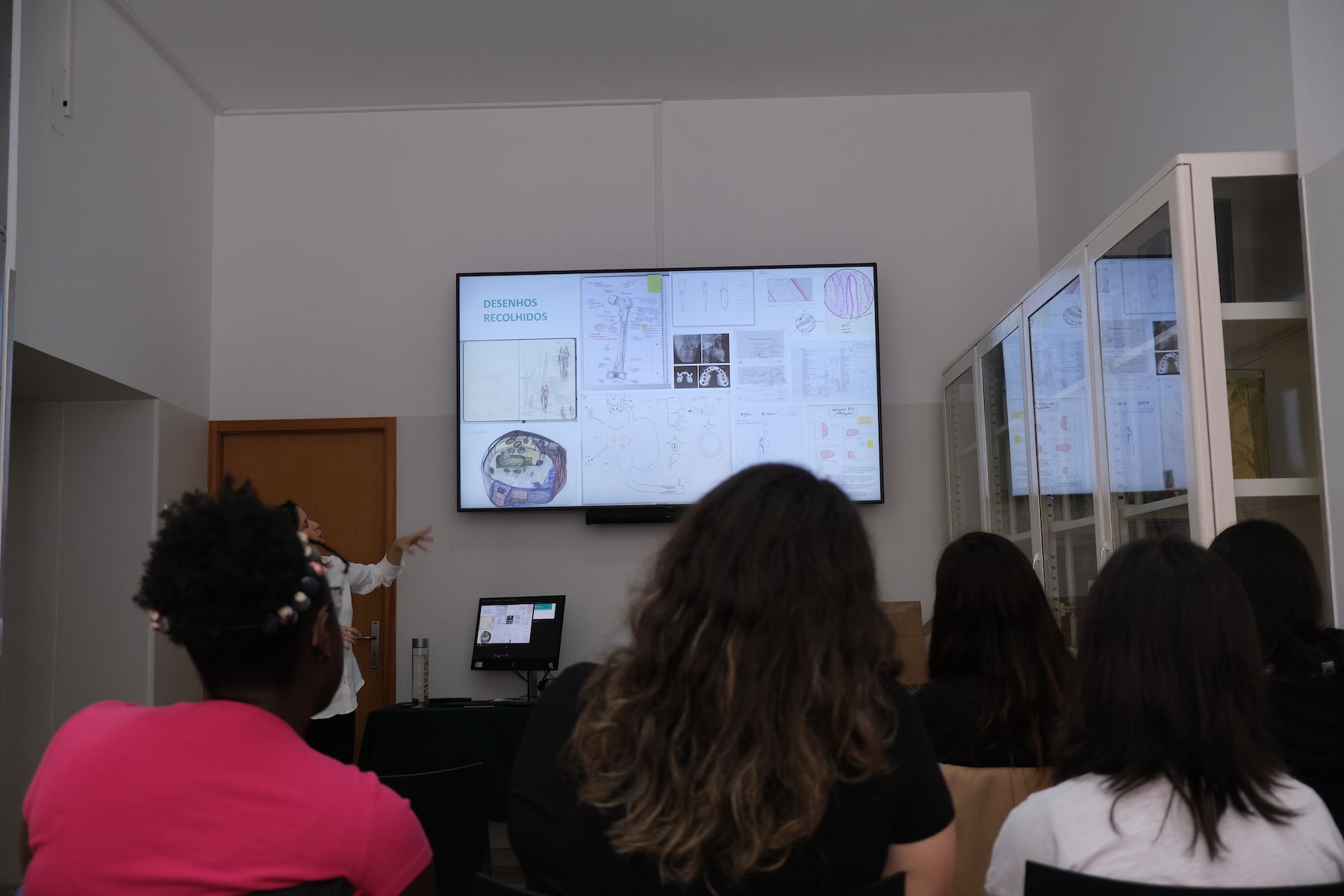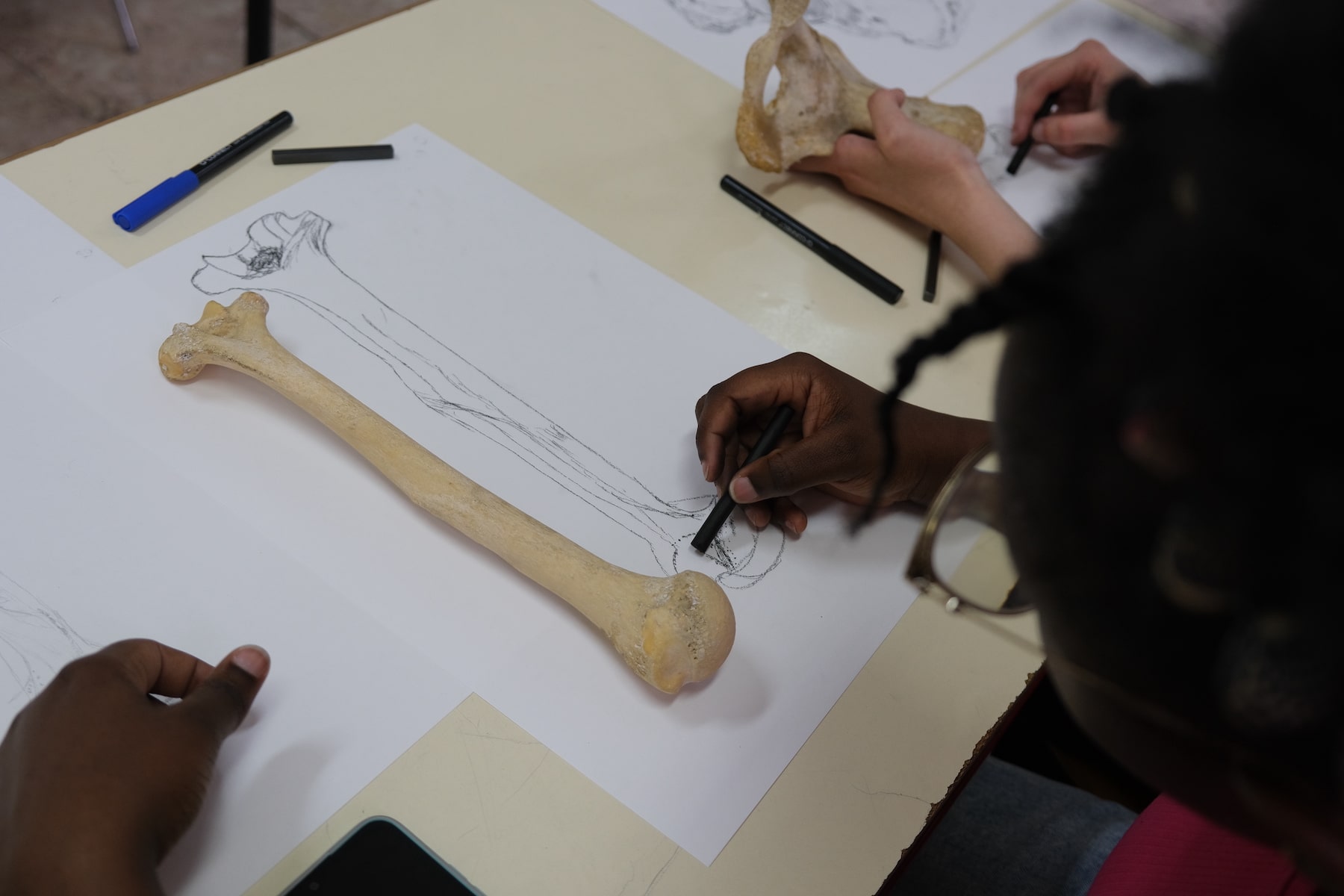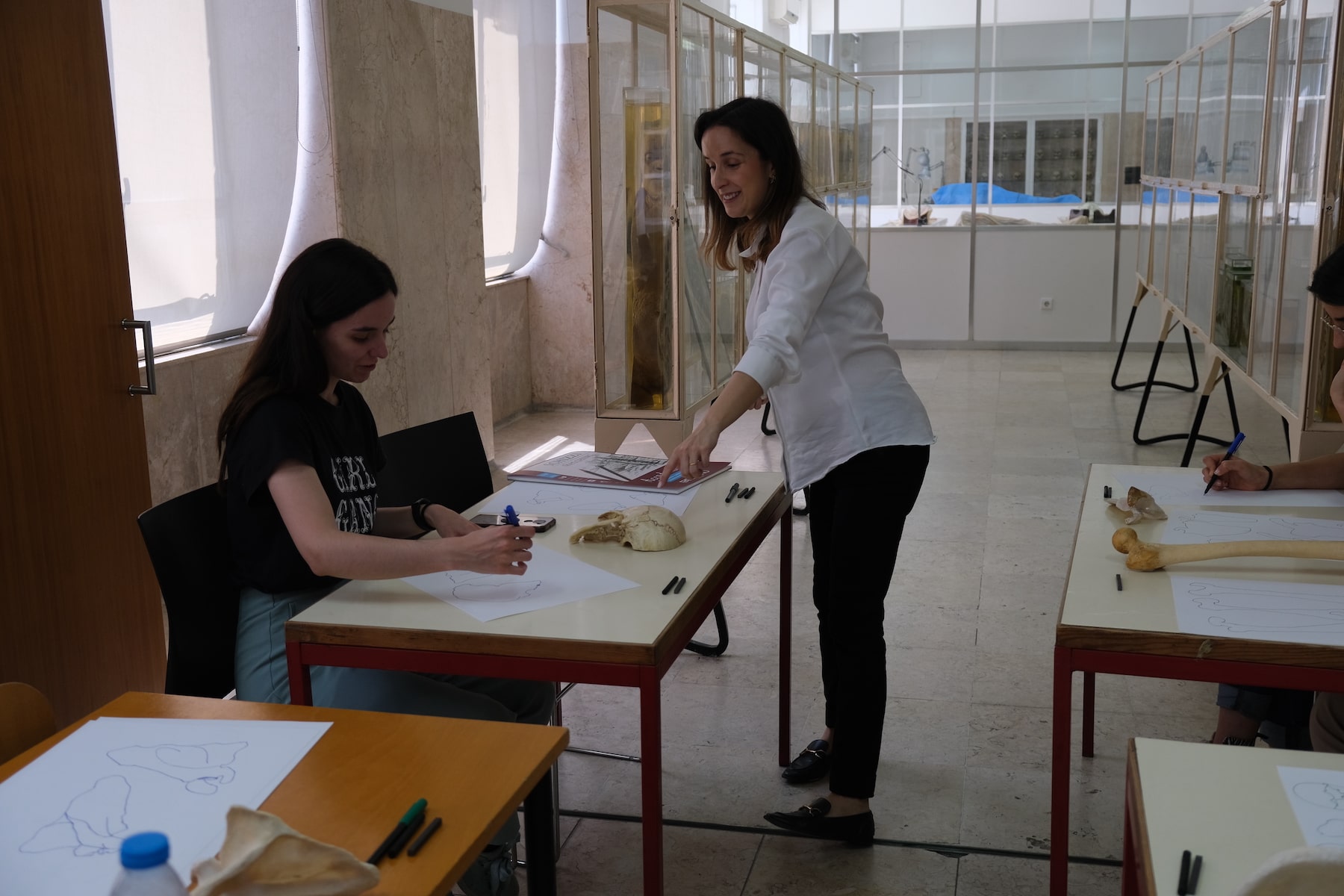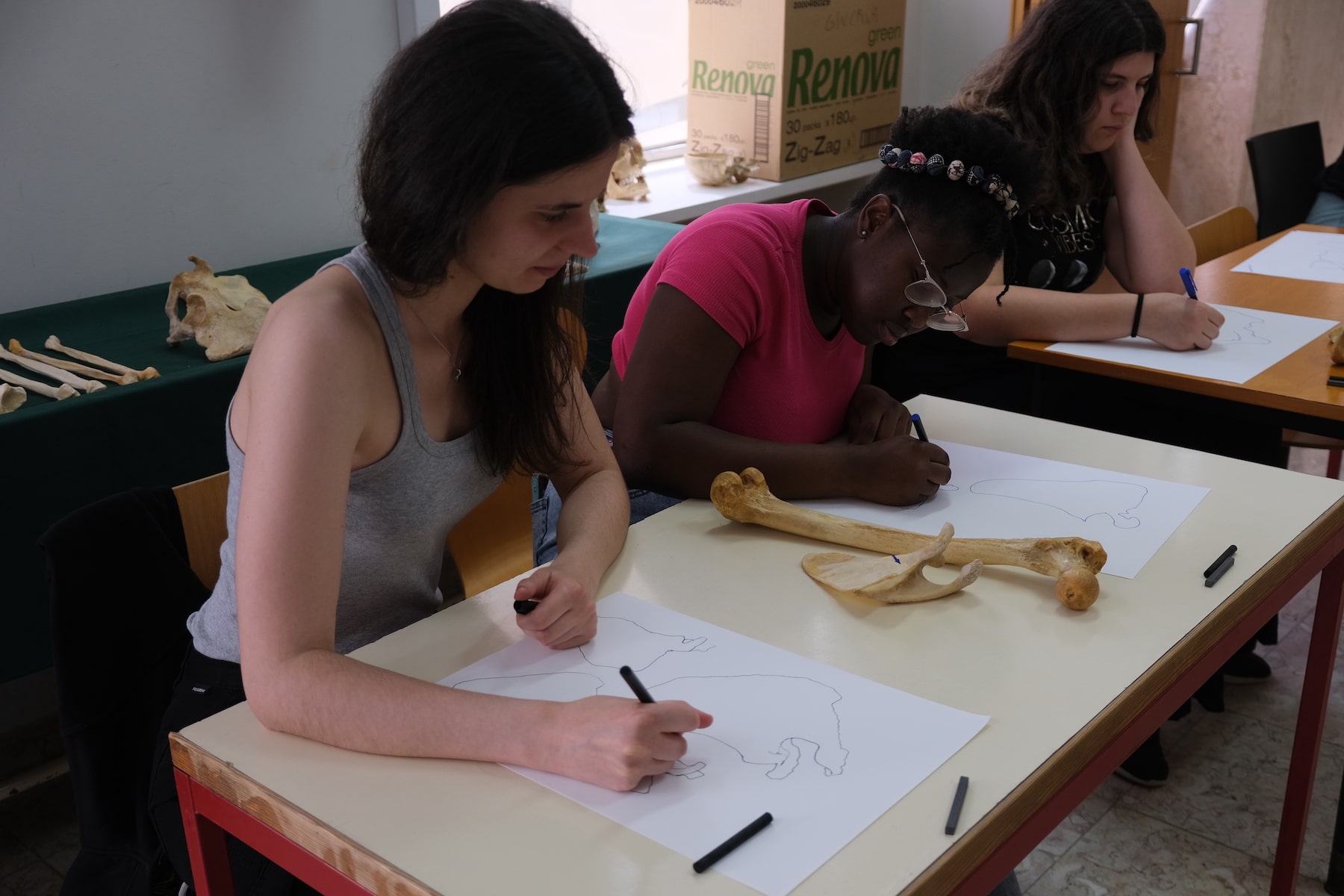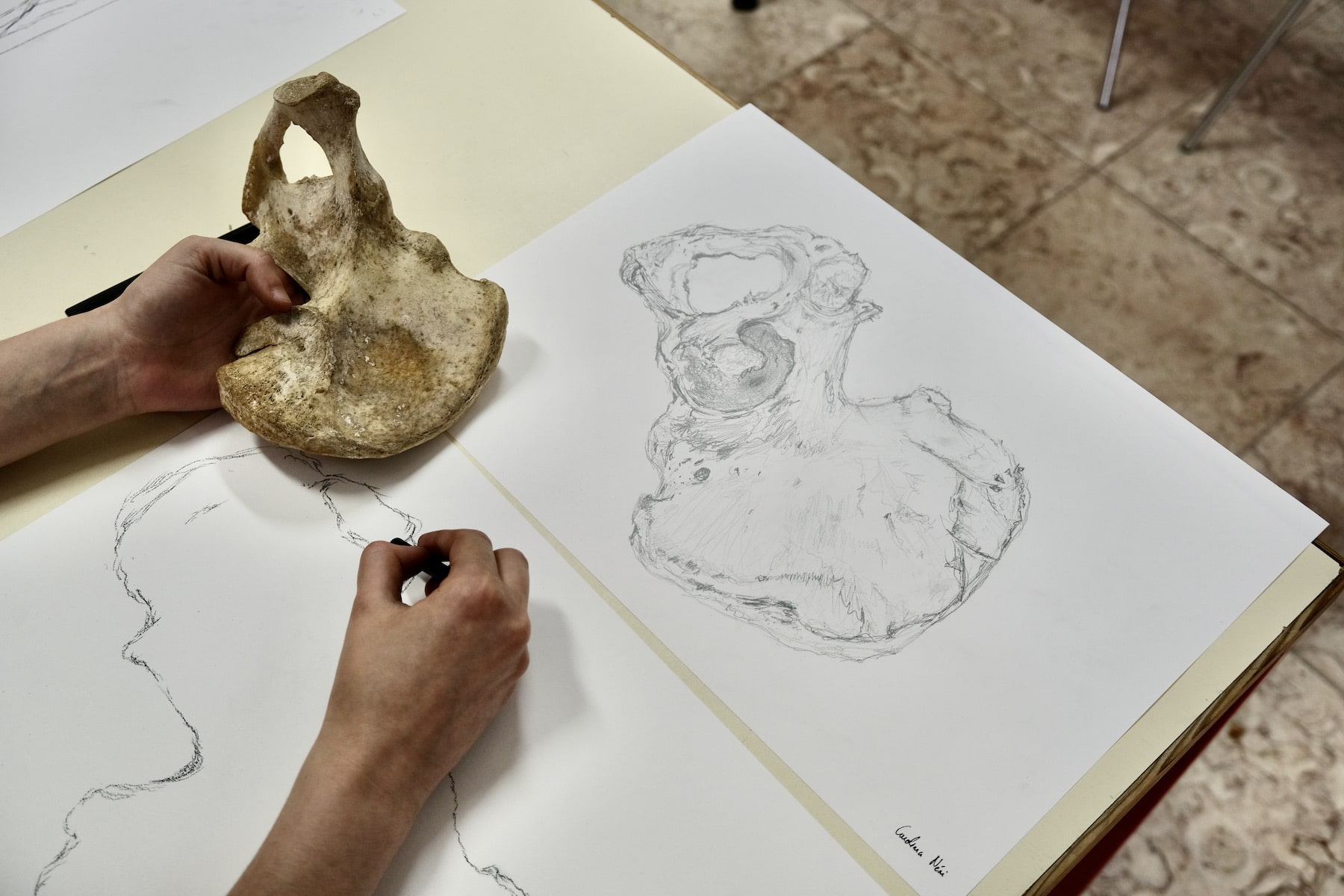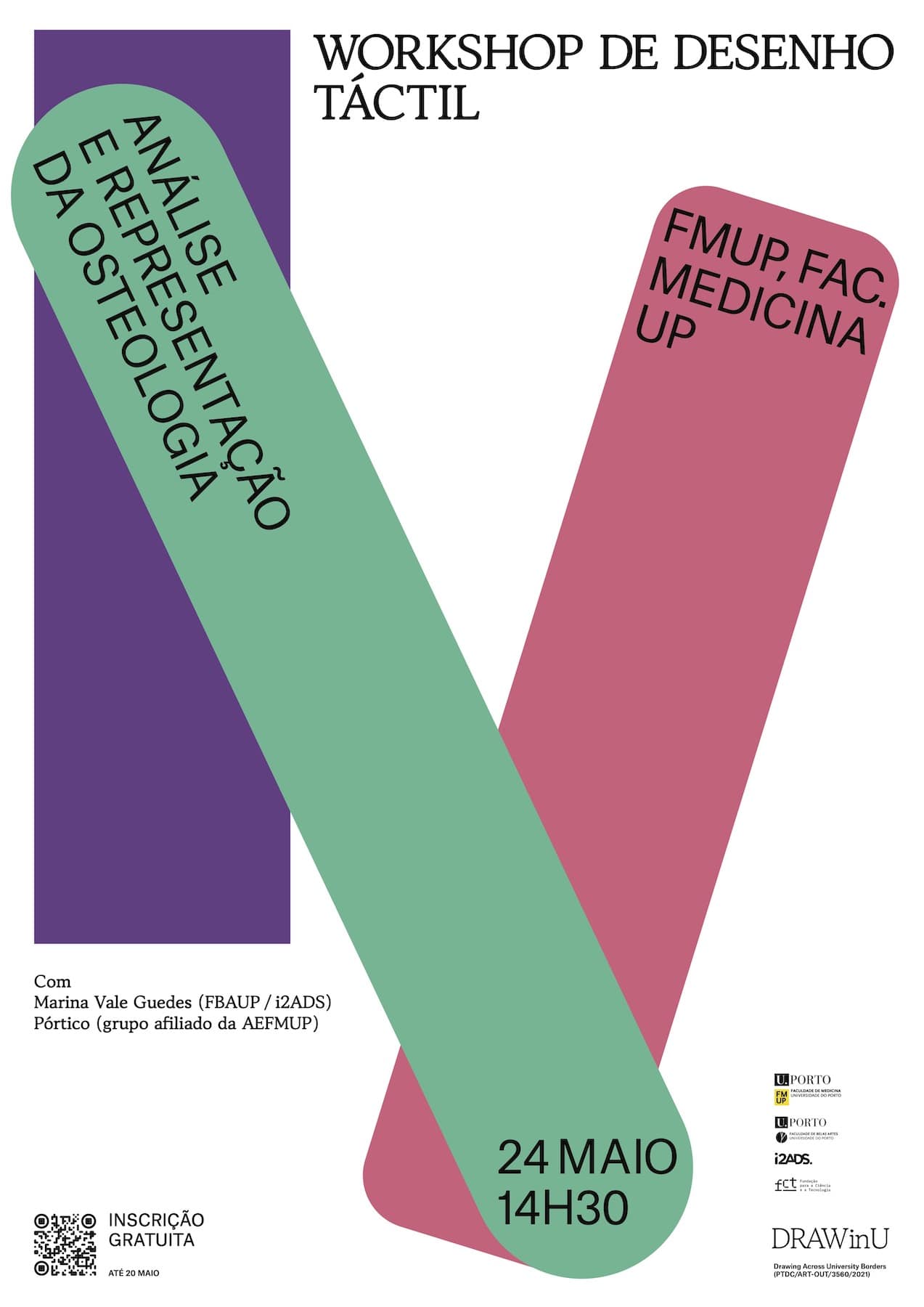The drawing experience presupposes the manipulation of the materials and tools used to reveal the grapheme of the elements inscribed on the support. Regardless of the starting point linked to imagination or perception of observed reality, the hand may incorporate the function of a seismograph that holds the ability to record the information transmitted to it. This seemingly ancillary function may be subverted when considering the importance of touch in gathering data crucial for constructing exploratory representations of the human body’s skeletal system. Building on this assumption, the Tactile Drawing workshop promotes a set of sensory experiences that privilege direct contact with osteology as a way of knowing, analyzing, and representing shapes, volumes, and textures, among other characteristics that can be revealed through touch. In a complementary process between observation and the possibility of feeling different types of bones, adding more information to the drawing is possible, thus enriching the exercise of representation.
The Tactile Drawing workshop focused on sensory experiences that explored drawing activities in direct contact with human osteology. Touch was the starting point for the construction of various representations linked to the analysis of shapes, volumes, and textures. In a complementary process between observation and the action of feeling different types of bones, the possibility of adding more information to the drawing was considered, thereby expanding the knowledge about these structures.


